The internet is full of tools that promise to “revolutionize” the classroom. But let’s be honest, most of them just clutter your tabs.
What teachers really need are classroom technology tools that actually serve specific functions. The kinds that become part of your regular routine, where you know exactly what they’re for, and exactly when to reach for them.
So we’ve done the filtering for you. This mega list rounds up classroom technology tools organized by what you actually need:
Let’s get into it.
Interactive Presentation & Engagement Tools
These classroom technology tools help turn presentations into active learning sessions. Instead of delivering content one-way, teachers can use them to ask questions, gather real-time feedback, and keep students involved. They’re especially helpful when attention starts to drift or when lessons need a boost of energy.
1. ClassPoint
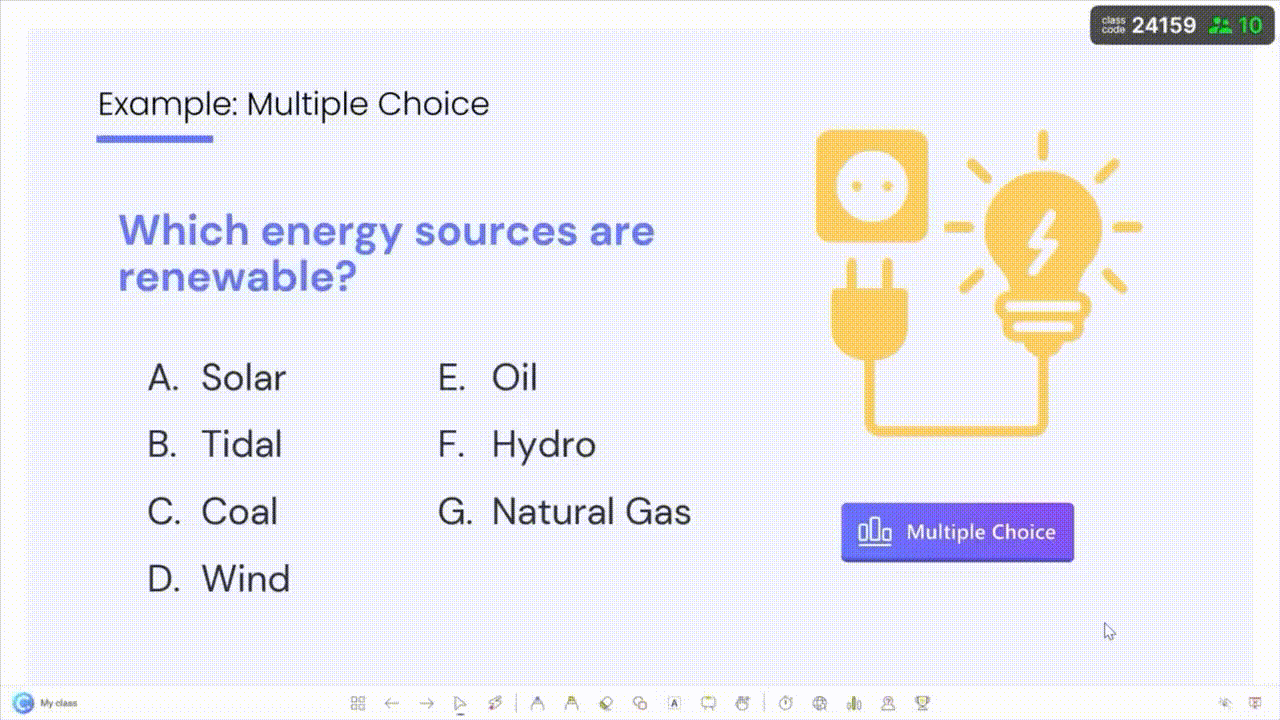
ClassPoint is a PowerPoint add-in that lets teachers embed quizzes, award stars, and access dynamic live presentation tools directly within their presentation. Without switching platforms, teachers can run multiple choice, word cloud, or short answer questions and get instant responses from students.
It includes tools like a random name picker and annotation options that make classroom management smoother during lessons. ClassPoint is ideal for teachers already using PowerPoint who want to make their presentations more interactive without adding complexity.
2. Nearpod
Nearpod turns slide-based lessons into interactive experiences students can follow on their own devices. Teachers can add polls, quizzes, videos, and drag-and-drop activities. Sessions can run live or be assigned for self-paced work.
The platform also offers a rich library of pre-made lessons and activities aligned with academic standards, making it a strong option for blended or flipped classrooms.
3. Pear Deck
Pear Deck integrates with Google Slides and PowerPoint Online, allowing teachers to add formative questions into their slides. Students join a session and respond in real time with text, drawings, or draggable elements.
It’s a helpful tool for silent participation, warm-ups, and quick comprehension checks. Pear Deck encourages all students to engage without the pressure of speaking up in class.
4. Mentimeter
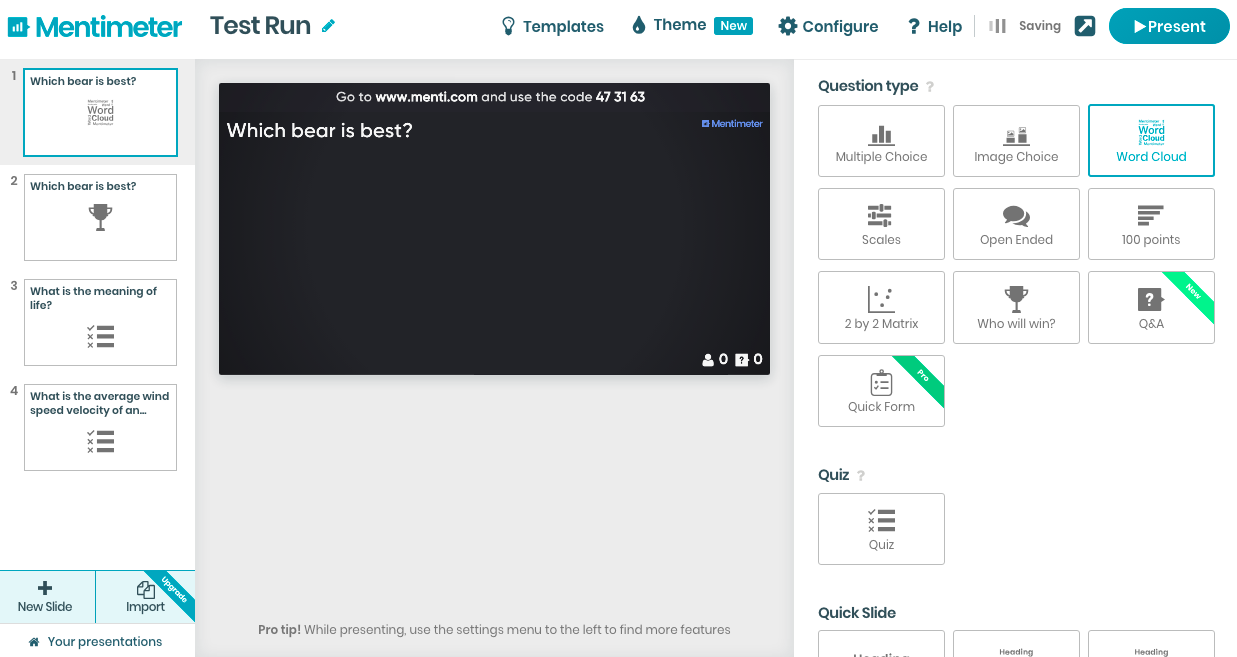
Mentimeter is a versatile polling tool that works well for both classrooms and professional settings. Teachers can quickly create live polls, quizzes, or word clouds, and students respond using their phones without needing to sign in.
While it’s not built solely for education, its simplicity and flexibility make it a useful option for quick feedback, brainstorming sessions, or informal formative checks.
For a more in-depth list, check out our list of 18 Must-Have Interactive Presentation Tools for Engaging Classes.
AI-Powered Teaching Assistants
AI is no longer a futuristic extra in the classroom. It’s becoming a practical, everyday tool for teachers who want to save time, adapt materials, and offer more personalized support to students. These classroom technology tools assist with everything from lesson planning and content creation to differentiated learning and student-facing interactions.
5. Edcafe AI
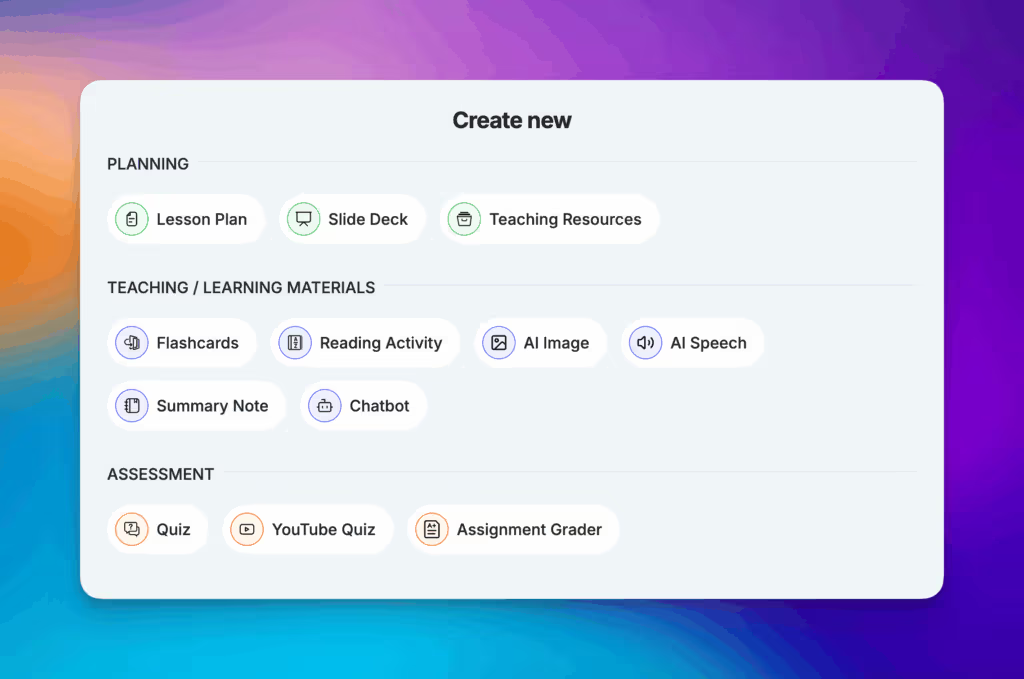
Edcafe AI is an all-in-one platform built specifically for educators. It supports every stage of the teaching workflow including lesson planning, slide creation, flashcards, quizzes, assignments, reading activities, and even auto-graded assignments. Teachers can generate differentiated resources based on student level and even create AI chatbots that interact directly with students with a simple scan of a QR code.
What sets Edcafe AI apart is its depth and customizability. You can generate contextual content tied to any existing content you already have, customize outputs based on student needs, and store everything in a dedicated space that keeps your teaching materials organized. It’s designed for teachers who want full control over how AI supports both instruction and student learning.
6. MagicSchool.ai
MagicSchool.ai offers a wide range of AI tools tailored to specific teaching tasks. You can quickly generate rubrics, classroom strategies, parent emails, accommodations, and lesson plans — all from simple prompts. It helps teachers save time on routine tasks and stay focused on instruction.
The platform also includes Student Rooms, where students can safely interact with AI tutors under teacher supervision. This adds another layer of support for personalized learning and makes MagicSchool a dual-purpose tool for both teachers and students.
If you're ever considering of testing out tools in the same vein as MagicSchool AI's, scan this list of 12 Best Free Magic School AI Alternatives!
7. Brisk Teaching

Brisk Teaching is a Chrome extension that works inside Google Docs, Google Slides, and webpages. Teachers can use it to simplify or translate text, generate questions, and adjust content to better fit student needs. It’s especially handy when working directly with online materials or existing documents.
Brisk is ideal for fast-paced classrooms that rely on Google Workspace. It doesn’t require switching platforms, which makes it a convenient tool for real-time lesson prep and on-the-fly differentiation.
8. Diffit
Diffit helps teachers create leveled reading materials based on any topic, URL, or video. It generates simplified passages, vocabulary lists, and comprehension questions suited to different reading abilities. Teachers can adjust the complexity and focus of the materials to match their class.
It’s a helpful tool for mixed-level classrooms, language learners, or any setting where reading differentiation is needed. Diffit makes it easy to turn any resource into something more accessible without starting from scratch.
Assessment & Grading Platforms
Grading doesn’t have to mean spending hours over stacks of papers. These classroom technology tools help teachers assess student learning faster and more consistently, whether through auto-grading, digital annotations, or live formative checks. They also support data-driven decisions by organizing results into easy-to-read dashboards.
9. Gradescope

Gradescope is a grading platform built for both handwritten and digital assessments. Teachers can scan student work and use AI-assisted grouping to grade similar answers together, making large-scale grading more efficient. It supports a wide range of assignment types, including math, programming, and essays.
The platform also integrates with common LMS systems and offers detailed analytics to track student understanding over time. It’s especially popular in higher education but is increasingly used in K–12 settings for streamlined rubric-based grading.
10. Formative
Formative allows teachers to create assignments and assessments that students complete online in real time. It supports a variety of question types, including drawing responses, audio, and math typing. As students work, teachers can see their answers live, give feedback instantly, and make adjustments on the spot.
The platform is built for ongoing, low-stakes checks for understanding. Teachers who want more responsive, in-the-moment assessment tools will find Formative helpful for keeping instruction adaptive and informed.
11. GoFormative
GoFormative is another name used interchangeably with Formative. It’s the same platform, but the alternate URL is often used. All features, tools, and functions are identical.
This entry exists only for clarity in case teachers encounter the GoFormative branding. You can use either link to access the same toolset.
12. ZipGrade
ZipGrade turns your mobile device into a scanner for paper-based multiple choice quizzes. Teachers print answer sheets, distribute them to students, then scan them with the ZipGrade app to get immediate results. It’s a fast, reliable solution for classrooms that still prefer pen-and-paper but want faster grading.
Though it doesn’t offer deep analytics or question variation like digital tools, its speed and simplicity make it a favorite for quick quizzes, exit tickets, or bell-ringer checks.
Gamified Learning & Review Tools
These classroom technology tools bring game mechanics into the learning process. Whether it’s answering questions to earn points, competing in teams, or unlocking power-ups, these platforms make review sessions more engaging. They’re especially useful for formative assessment, topic revision, or injecting energy into the classroom routine.
13. Wayground (formerly Quizizz)
Wayground, previously known as Quizizz, offers quiz-based learning with a strong gamification layer. Students can play individually or in teams, earn power-ups, and answer multiple choice questions at their own pace. It’s browser-based and works across devices, making it easy to run in any classroom setup.
Teachers can create their own quizzes or choose from a massive library of pre-made ones. Wayground also provides post-quiz data, which helps track accuracy, speed, and student performance trends.
14. Gimkit

Gimkit blends content review with strategy-based gameplay. Students answer questions to earn in-game currency, which they can spend on upgrades or power-ups during the session. The games vary in style, from team modes to survival challenges.
Created by a high school student, Gimkit stands out for its replayability and variety. Teachers can create their own question sets or import them from other platforms, making it flexible for different subjects and grade levels.
15. Kahoot!
Kahoot! is one of the most widely recognized tools in this space. It’s built around live, fast-paced quiz sessions where students race to answer correctly. Questions appear on a shared screen while students respond from their own devices, adding an element of urgency and competition.
Kahoot! is ideal for quick reviews, class competitions, or exit tickets. It also offers a library of ready-to-use quizzes across a wide range of subjects.
16. Blooket
Blooket turns review questions into a variety of arcade-style games. Students can play individually or in groups, and each game adds a different twist to the quiz format — from racing games to tower defenses.
Teachers upload or select a question set, and students apply their knowledge while engaging in gameplay. Blooket keeps things fresh by offering multiple game modes using the same content, which boosts both repetition and motivation.
Need more? Our list of Top Gamified Learning Platforms for Teachers and Corporate Trainers is up!
Video Creation & Instructional Content Tools
Video has become a key part of modern instruction, especially with flipped classrooms, hybrid learning, and student-led exploration. These classroom technology tools help teachers create, edit, or assign videos that support instruction beyond the traditional lecture. They make it easier to deliver concepts visually, offer asynchronous support, and track engagement.
17. Edpuzzle
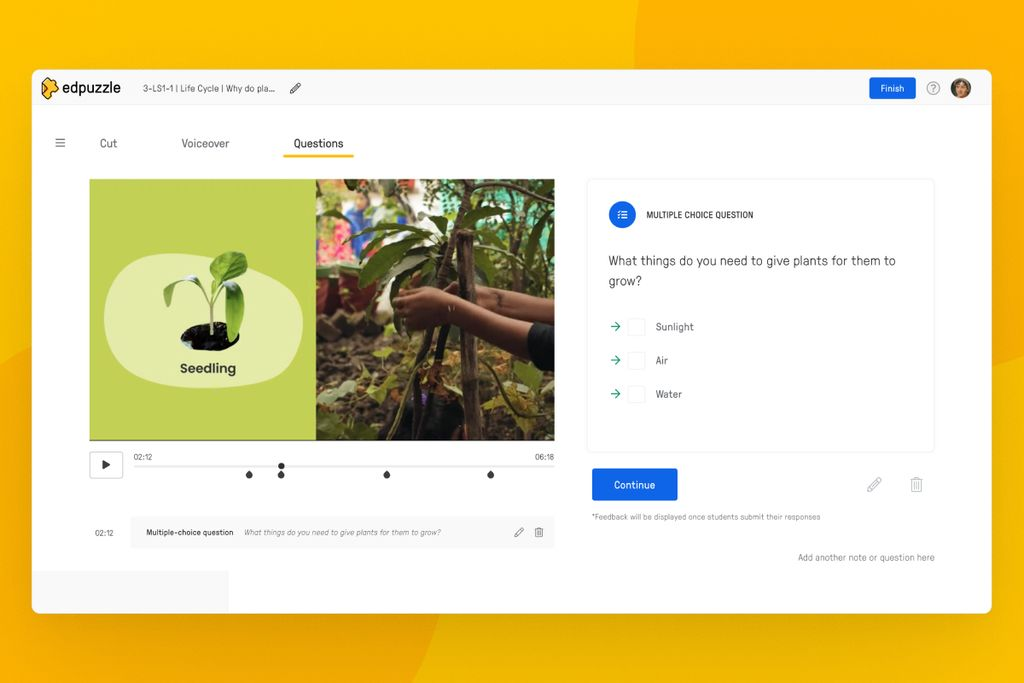
Edpuzzle lets teachers turn any video into an interactive lesson. You can trim content, embed multiple choice or open-ended questions, and track whether students watched the video and how they responded. It supports videos from YouTube, Khan Academy, or your own uploads.
Teachers can see who watched what, how long they stayed, and where they struggled — making it a strong tool for accountability and formative assessment in video-based learning.
18. Loom
Loom is a screen recording tool that makes it easy for teachers to record walkthroughs, mini-lessons, or video messages. You can capture your screen, voice, and webcam at the same time, then share the link with students or embed it in LMS platforms.
It’s fast, easy to use, and well-suited for giving directions, reviewing student work, or creating short instructional clips for flipped or remote settings.
19. Screencastify
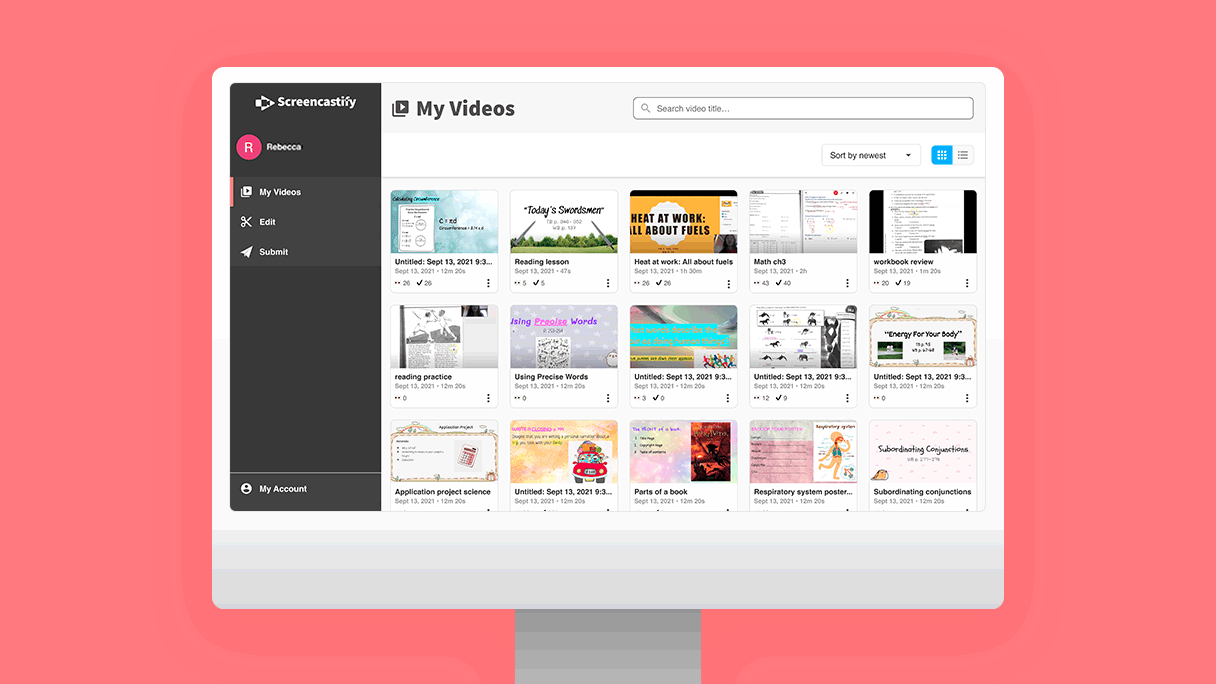
Screencastify is a Chrome extension for screen recording, ideal for educators who want to create quick videos without downloading new software. It offers drawing tools, webcam recording, and simple editing features to trim, crop, and add text.
Videos save directly to Google Drive, and teachers can share them with students or embed them in lessons. Screencastify also offers a Submit feature where students can record and turn in video assignments.
Flip is often used for exit tickets, peer feedback, project updates, and language practice. Its simple interface and community-focused design make it a favorite for promoting expression and engagement through video.
Collaboration & Student Communication Tools
Collaboration is a core skill in any modern classroom. These classroom technology tools are designed to support real-time group work, idea sharing, and student-to-student or student-to-teacher communication. Whether it’s brainstorming, project planning, or open discussions, these platforms help make participation more inclusive and visible.
20. Padlet
Padlet is a digital bulletin board where students can post text, images, videos, and links on a shared space. Teachers can set up different layouts — timelines, grids, maps, or columns — to guide collaboration or collect ideas from the class.
It’s often used for brainstorming, exit tickets, resource sharing, and collaborative research. Padlet is simple to use and works across devices, making it accessible for group work in and outside of class.
21. FigJam for Edu
FigJam for Edu is a collaborative whiteboard tool by Figma that allows students to contribute sticky notes, drawings, and comments in real time. It’s designed for interactive group work, visual thinking, and peer feedback across subjects.
The education version gives teachers classroom-friendly controls while letting students work together in shared spaces. It’s a modern replacement for whiteboards and is especially effective for project planning, mind mapping, and brainstorming.
22. Miro
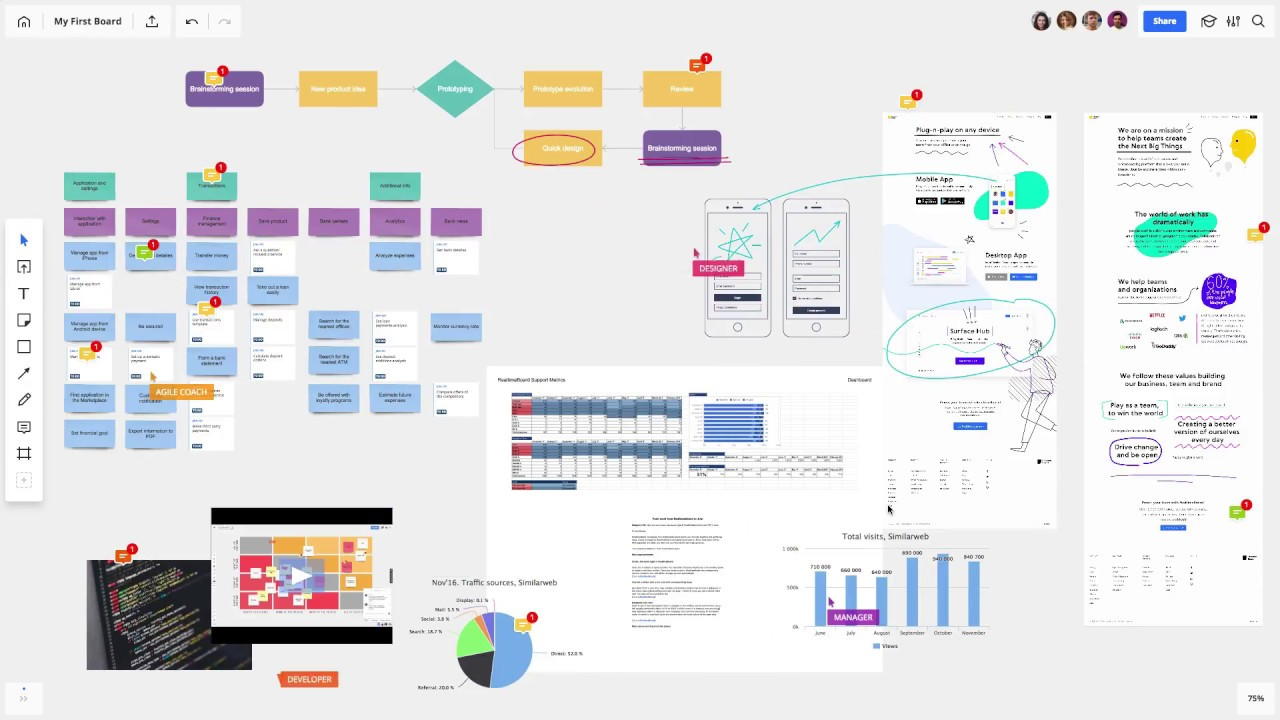
Miro is a flexible online whiteboard used for brainstorming, group projects, and visual organization. It offers templates, sticky notes, flowcharts, and commenting features that support structured collaboration across subjects.
Though originally built for teams in the workplace, Miro has become popular in education for project-based learning and classroom discussion. Its expansive canvas and toolset make it ideal for deeper group work sessions.
23. Slack
Slack is a messaging and collaboration platform often used in higher education and university courses. It supports organized channels, file sharing, direct messages, and integrations with tools like Google Drive and Zoom.
While not built specifically for K–12, Slack offers a more professional, real-world communication model for college students working in teams or managing complex group projects.
Productivity & Time-Saving Utilities
These classroom technology tools aren’t for direct instruction, but they’re essential for keeping everything else running smoothly. From automating repetitive tasks to managing files and streamlining communication, these tools help teachers get more done with less effort.
24. Canva for Education
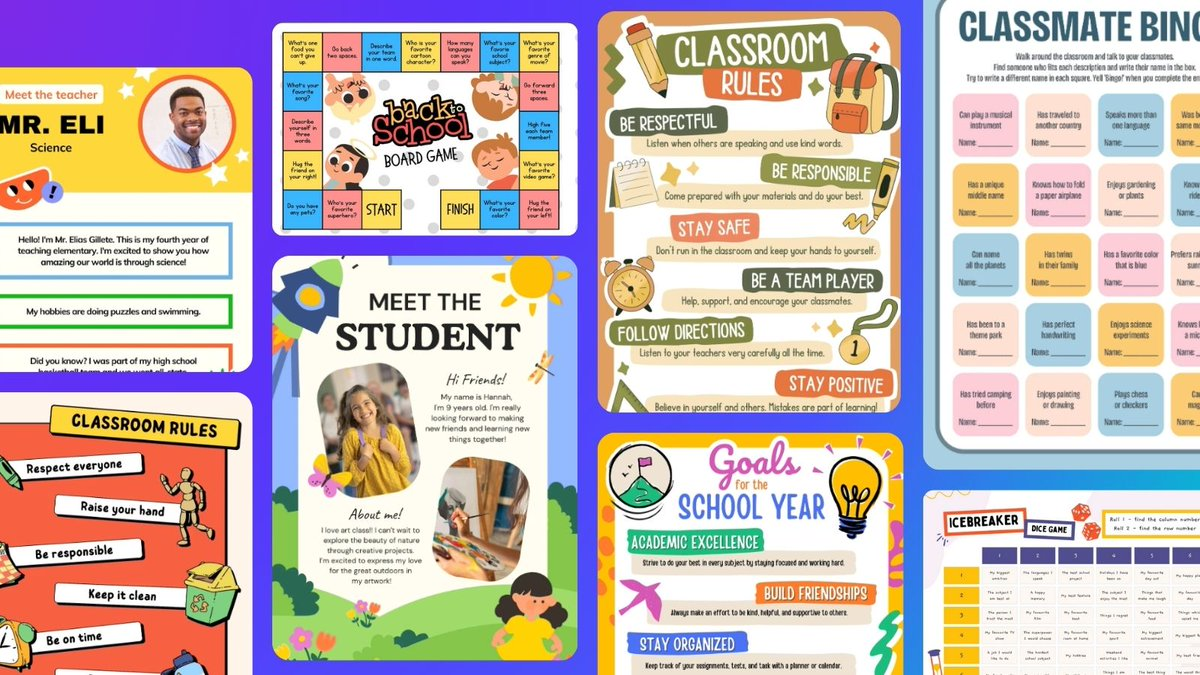
Canva for Education gives teachers access to an intuitive design platform with ready-made templates for lesson materials, worksheets, posters, and presentations. It includes a classroom space where teachers can assign design tasks to students and collaborate on visual projects.
Everything is drag-and-drop, so even non-designers can quickly create professional-looking resources. The education version is free and includes premium features at no cost for verified teachers and schools.
25. SmallPDF
SmallPDF is a document utility tool that helps teachers manage PDFs more efficiently. You can compress, convert, split, merge, or edit PDF files directly from your browser, without needing dedicated software.
It’s especially useful when preparing student packets, editing scanned worksheets, or converting resources into more shareable formats. SmallPDF is simple, fast, and accessible across devices.
26. Grammarly
Grammarly is a writing assistant that checks for spelling, grammar, clarity, and tone. Teachers use it to refine emails, feedback, report comments, and instructional materials. The browser extension works across most writing platforms, including Google Docs and email clients.
Beyond simple corrections, it also helps improve sentence structure and consistency — saving time while helping teachers model strong writing habits in their own communication.
27. Text Blaze
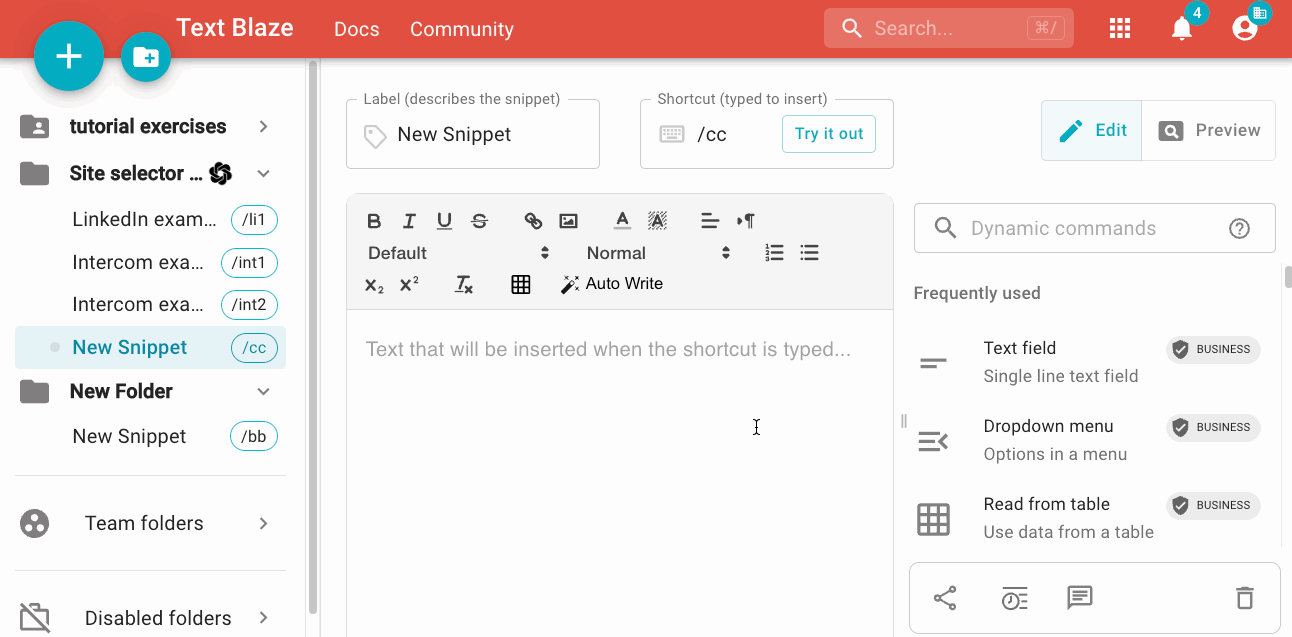
Text Blaze is a text expansion tool that lets you create shortcuts for frequently used phrases, comments, and responses. It’s especially helpful for speeding up repetitive writing tasks like grading feedback, parent communication, or lesson annotations.
Teachers can create custom templates that auto-fill with dynamic information, which significantly cuts down typing time during busy grading or reporting seasons.
28. Mote
Mote allows teachers to record and embed voice notes directly into Google Docs, Slides, Forms, and Classroom. It’s designed for quick, personalized audio feedback and for supporting students who benefit from auditory explanations.
Mote is widely used in inclusive classrooms, language learning, and remote feedback situations. It adds a human voice to digital interactions, helping build connection and clarity even when face-to-face time is limited.
